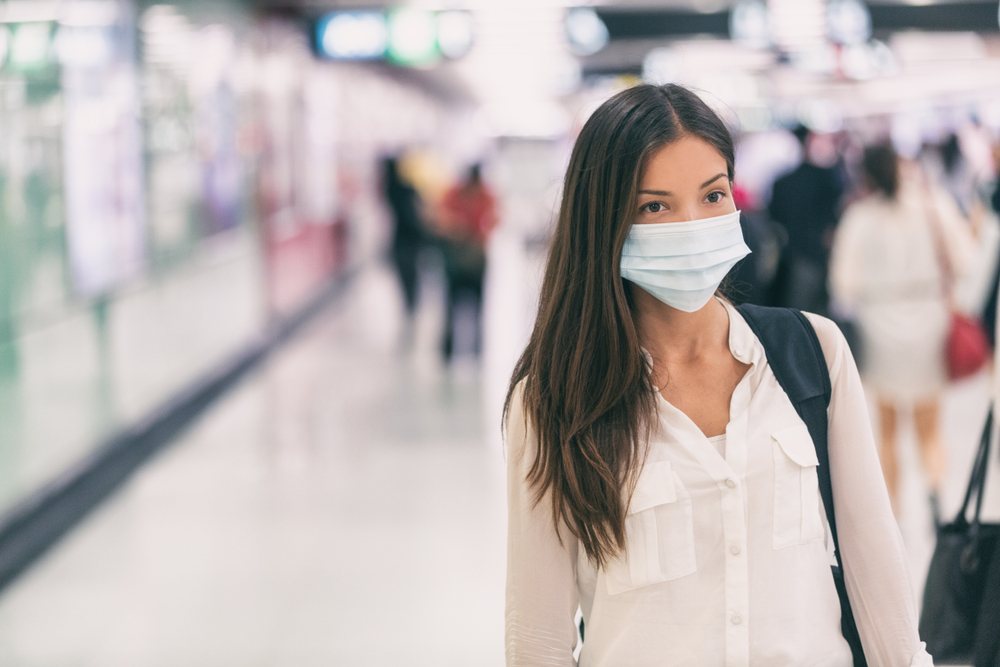Published January 31, 2022 in insidehighered.com
By Colleen Flaherty
Florida State closes its health sciences building after a faculty report details an apparent cancer cluster, black debris falling from air vents, dangerous radon levels and more. Professors say earlier action may have saved lives.
Florida State University has temporarily closed a campus building following a report linking the facility to eight cancer cases among faculty members and former students within 10 years. Three of the eight have died. Two of the dead scientists worked side by side for years in one particular lab.
In addition to cancer cases, the faculty-initiated report links the Sandels Building to three diagnosed autoimmune disorders and seven cases of allergies, pneumonia and other chronic conditions. Some affected professors say their symptoms flare up when they’re in the building; one longtime FSU professor diagnosed with Sjögren’s syndrome and fibromyalgia in 2017 is quoted as saying her symptoms and her constant allergies decreased significantly when she was working from home during COVID-19.
Faculty members in the health and human sciences have reported concerns about their building to Florida State for at least two decades, according to the explosive, 100-plus-page dossier submitted this month to President Richard McCullough. (The report, available in full here, was first covered by Florida Politics.) Beyond concerns about excessive humidity and mold, professors working in the building have flagged black particles and chunks of debris on classroom, laboratory and office surfaces. These faculty reports have been concentrated on the fourth floor of Sandels—as have the cancer cases.
Professors now also say there are dangerously high radon levels in the building: according to recent faculty radon readings, short-term radon levels throughout the building ranged from 5.7 to 13 picocuries per liter. Long-term levels ranged from 1.9 to 7.1 pCi/L. Experts generally consider levels of 4 pCi/L or higher to be hazardous, but even lower levels are associated with elevated cancer risk.
Sandels faculty members are concerned, too, about possible exposure to toxic chemicals, based on mysterious yellow stains and powder that repeatedly accumulate inside and behind chemical hoods in the building. One of the hoods was removed last year, but university facilities personnel tested the yellow residue for pH levels only, according to the report.
Beyond the yellow stains, bins of chemicals including old stores of cyanide and acrylamide were removed from Sandels last year. Professors say they’ve asked for a full list of the reagents taken by campus environmental health and safety personnel, but that this has not been provided (a correspondence from a campus chemical safety officer included in the report says it would be “cumbersome” to comb through a waste disposal vendor’s manifest to determine exactly what was found in a particular lab).
‘Action That May Have Saved Lives’
The Sandels Building at Florida State University“It is unknown how many and what type of dangerous and toxic chemicals were stored in Room 442E since the list of reagents taken by EH&S was not provided,” the report says. “It is also unknown whether a combination of toxic chemicals, mold and black particles/poor air conditions in the east wing of the Sandels Building contributed to the cancer cluster affecting faculty and students on the 4th floor … The faculty are disappointed that their repeated requests over the past 20 years have not been taken seriously enough to take action that may have saved lives and prevented serious diseases.”
Sandels, which was constructed in 1956 and renovated in 1998, houses the College of Health and Human Sciences. Asbestos was removed from the building in the mid-2000s. Air ducts were inspected and cleaned 2009, with third-party experts documenting black mold and dust debris in the coils of the building’s heating, ventilation and air-conditioning system.
In the fall, professors photographed black particles of various sizes on air filters in the building. FSU began cleaning the ventilation system again just after those photos were taken, in September. But nearly five months later, faculty members are still finding debris and fine particles on surfaces in the building. This occurs even when air vents are covered, according to the report.
At least one air filter photographed by professors earlier this month hadn’t been changed since 2003.
Michael Delp, dean of health and human sciences, abruptly announced the closure of the building for teaching and research on Jan. 19.
“The college will be seeking to have further air testing performed in Sandels building,” Delp wrote to faculty and staff members. “I am asking that all faculty, staff and students with offices and classes in Sandels building to work and hold classes remotely until Feb. 1st. Please come to your office in the next day or two to remove anything you need to work and teach remotely.”
The report was submitted to FSU’s central administration two days later. FSU closed the building until further notice three days after that.
Lynn Panton, Michael Ormsbee, Gloria Salazar and Qinchun Rao, all professors of health and human sciences, compiled the report on behalf of their colleagues, who formally endorsed their work. Ormsbee himself was diagnosed with a rare case of duodenal follicular lymphoma in 2016 at age 36.
Panton, Ormsbee, Salazar and Rao forwarded interview requests to Dennis Schnittker, university spokesperson. Schnittker said via email that “four faculty members recently raised concerns about air quality and environmental safety inside the Sandels Building. College of Health and Human Sciences Dean Michael Delp alerted Provost Jim Clark to these concerns last week.”
Health and safety are the university’s top priorities, Schnittker continued, “and, out of an abundance of caution, Provost Clark immediately moved to find alternate locations for all classes and approved remote work for faculty and staff while an environmental review of the building is completed.”
FSU has contracted with outside experts to conduct a “thorough environmental review of the building, which will include a comprehensive measurement of radon levels,” Schnittker said, noting that this process will take some time. “The university is inviting individuals to self-report any concerns that they have about other campus buildings. The university will review these reports and will address any issues promptly.”
Thus far, Schnittker said, the English department, which is located in the Williams Building, has reported concerns of its own. The department is now working remotely while the university examines the conditions in Williams.
Eric Chicken, Faculty Senate president and professor of statistics at Florida State, called the Sandels revelations “serious news,” saying, “I expect that FSU will do everything it can to protect the members of our university community.”
“The university has responded well to protect us during the pandemic, so I have faith that we will do so in this case as well,” Chicken added. “I am aware of the steps taken so far regarding the building and believe that these actions will put the affected faculty into a safe environment until the problem is resolved.”
Chicken said he was not aware of any faculty concerns about additional buildings.
A Serious Cluster
This is not the first time that an apparent cancer cluster has been linked to a university. Alumni of both Auburn and Susquehanna Universities have reported them since 2000. In both cases, investigations found no conclusive evidence that the cancers were linked to a particular site or source on or off campus.
The Florida State case is already different, however, in that apparent hazards have been observed in specific locations in real time, over time.
One now-retired Sandels professor wrote to the college dean’s office upon a 2009 professional cleaning of the ventilation system, saying, “I just had the cleaning crew discard the filter that was on the [air] filter in my office. I wish that I had saved it now that I have read your email. It was totally covered in black gunk. I also had the crew discard the air machine as it too was infiltrated with whatever matter was on the filter.”
The professor continued, “It’s hard to determine if the misery I feel in my office is due to just the air coming from the vent or a combination of a dirty carpet and the dust that is all over my office. I will tell you that when teaching in 401 (not so much in 407) I can barely get through a lecture without constantly drinking water and even that doesn’t prevent the congestion I have when I’m done. I plan to get yet another filter for my office.”
Another research coordinator wrote to the college in 2020 to report a bug infestation, a dead lizard and “black particles that are blowing out of the vents” in the Sandels basement.
“I understand this is sort of a whole building issue and the ones down here are covered with cheesecloth, but it is still concerning seeing the amount that is resting on the cloth and knowing that we and participants are breathing this stuff in,” wrote the research coordinator, Lauren Ormsbee.
In response, an office administrator wrote, “I’ll turn in a work order for the bugs and ask them to spray again. I can turn in a work order for the dust particles too, but I’m not sure what they can do if there is already cheese cloth over the vents. That has been the ‘go to’ solution for all areas that have requested it.”
Lauren Ormsbee has been diagnosed with thyroid disease, persistent postural perceptual dizziness and dermatofibrosarcoma protuberans, a rare type of skin cancer, since beginning work at Sandels in 2010. In addition to her 2020 report about conditions in the basement, Lauren Ormsbee reported mold in the building multiple times and requested a thorough cleaning.
Yun-Hwa (Peggy) Hseih, professor emeritus of food science, twice reported black particles falling on her lab countertops between 2005 and 2010. Since 2010, she’s been diagnosed with acute atypical pneumonia, bronchiectasis, mixed connective tissue disease (an autoimmune disorder), neoplasm of the connective tissue and four malignant mucosal melanomas.
Jeong-Su Kim, professor of exercise science, suffered from coughing, weakness and at-times “unbearable” neck pain before being diagnosed with stage IV lung cancer in 2020, the report says. By the time of diagnosis, the disease had spread to his spine and pelvic bones.
Yitong Zhao, a former Ph.D. student who worked on Sandels’s fourth floor, was diagnosed with the same rare skin cancer as Lauren Ormsbee last year, at 33 years old.
Shri Sathe, who died of bile duct cancer in 2019, was the Robert O. Lawton Distinguished Professor and Hazel K. Stiebling Professor of Food Science. He began working on the fourth floor of Sandels in 1988 and was diagnosed with squamous cell carcinoma on his gums in 2012, buccal mucosa cancer on his cheek in 2019 and, ultimately, bile duct cancer two months before his death, according to the report.
Kar Wai (Clara) Sze was a graduate student in Sathe’s lab from 1990 to 1996. She was diagnosed with gallbladder cancer in 2017 and died less than a year later. Another master’s student who worked in the basement of Sandels from 2000 to 2008 died of pancreatic cancer in 2019, according to the report.




